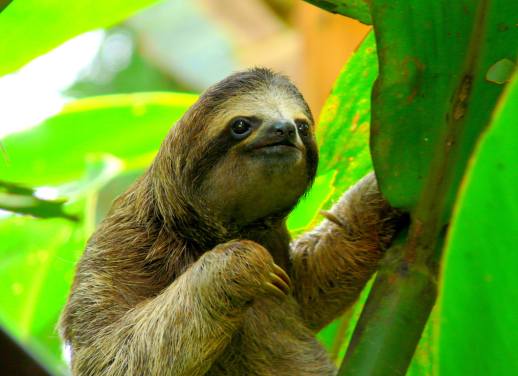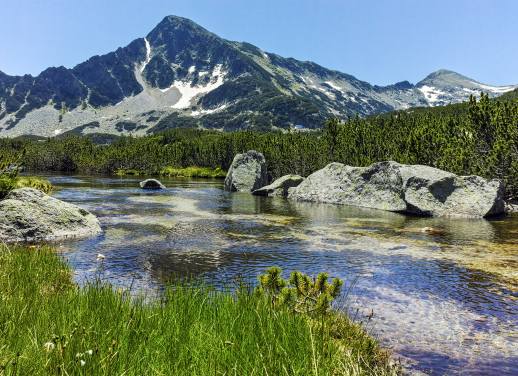This article was originally published on Geckos Tales.
Ever wondered why you couldn’t stick to that job, couldn’t stay put or rid yourself of a niggling sense that you just had to be somewhere – anywhere – else? Always knew you were born to travel the same way Springsteen was born to run?
Wonder no more, because now it’s official: wanderlust is genetic, and that relentless compulsion to drop what you were doing and run off to Timbuktu may not be much of a choice after all.
Scientists have recently revealed the existence of genome DRD4-7R, a variant of dopaminergic neuroreceptor dubbed ‘the Wanderlust Gene’. According to researcher David Dobbs, around twenty per cent of us have it: amongst its traits, according to Dobbs, a stronger urge to explore new places, ideas, foods and relationships, as well as a tendency to embrace adventure, movement and change. Sound familiar?
Unsurprisingly, the gene has been linked to those with a long history of travel under their belts: this genetic variation just might be that invisible catalyst that makes our travel engines so constantly primed for the great, wide adventurous void out there.
To some extent, the urge to seek adventure – and lots of it – is deeply embedded in the human imagination. We humans have been wandering around at length since our Palaeolithic foray from the wild savannahs of Africa 60,000 years ago. Old habits die hard. But those of us who come from a long line of migrators, or from cultures where moving about was particularly constant, will likely find themselves even more affected by rife wanderlust – thanks, in part, to this ultra restless, pleasure seeking gene.
For many, DRD4-7R is a welcome finding, a breath of fresh air: after all, incessant travel has frequently been likened to some sort of illness, or if not that, unflinching lunacy: the kind of behaviour that can easily land us into all sorts of crazy mischief. It’s another thing that sets us apart from the rest of our animal cousins, as Svante Pääbo, director of Evolutionary Anthropology at Max Planck Institute in Leipzig, Germany told National Geographic: “We jump borders. We push into new territory even when we have resources where we are. Other animals don’t do this.” […] “There’s a kind of madness to it. Sailing out into the ocean, you have no idea what’s on the other side. And now we go to Mars. We never stop. Why?”
Dobbs’ research builds on a study conducted by Chuansheng Chen of University of California Irvine in 1999, in which DRD4-7R was present more often in cultures that migrate over the ones that stay at home. Another studied tribesmen of the African ‘Ariaal’ tribe: those possessing the DRD4-7R thrived when they were allowed to be nomads, but faded when kept in the one spot.
As with most pop-science generalisations, it’s a big leap to claim that all those tireless flight searches and OCD tendencies to have bags and passports packed at the ready is simply the work of a solitary, rogue DNA segment.
As Yale University’s Kenneth Kidd told Elite Daily: “Genetics doesn’t work that way,” […] “You just can’t reduce something as complex as human exploration to a single gene.” Alternatively, Kidd argues that actually having the practical means to travel is a far more important piece of the puzzle.
Others point to early childhood learning through play and imagination as a core reason for our wanderlust: in our early years we create hypotheticals, become inquisitive and seek answers to our questions and quests; for some of us, that impulse carries right on through our lives.
Ultimately, attributing travel restlessness on something called a ‘wanderlust gene’ sounds a whole lot cooler, and to some extent at least, it’s true.
As a “20 per center”, life sure might be exciting, but it can also become a little unnerving: on the downside, having DRD4-7R runs the risk of us being a little more “out of control” than the other four fifths of the population.
According to the Tower’s Kylee Seifert, those who “live to travel, to take risks and to explore beyond the edge of comfort possess a beautiful childlike mentality and primal resourcefulness.” Some go even further with theses conclusions, like consciousness activist Garret LoPorto, who told the Huffington Post that those with DRD4-7R actually think like Neanderthals: “37,000 years ago Neanderthals likely intermingled with modern humans” […] “all of a sudden there’s a new gene in the human genome, the DRD4 7R gene.”
Primal indeed. As well as inquisitive travellers, Neanderthals were, in LoPorto’s words: “the original rebel rock stars”, sensation junkies who “loved battle, and music, and had a propensity for inciting chaos”. According to LoPorto, having DRD4-7R – and thus the mindset of our most hirsute descendants – is actually a good thing: it makes us more creative, more rebellious, and ever hungry for a new ways of seeing the world.
So next time you’re fretting over your bank balance deep in a South East Asian jungle, or cursing your frightful impulsivity as you careen through the troposphere on an adrenaline-bursting sky dive, keep in mind: all that mischief could just be your body’s blueprint at play – the unavoidable consequence of lineage, genetics and rock’n’roll Neanderthals, all of which conspired to ensure you were on the go since well before you even existed.
This article was originally published on Geckos Tales.
Feature image c/o Leo Hidalgo, Flickr






